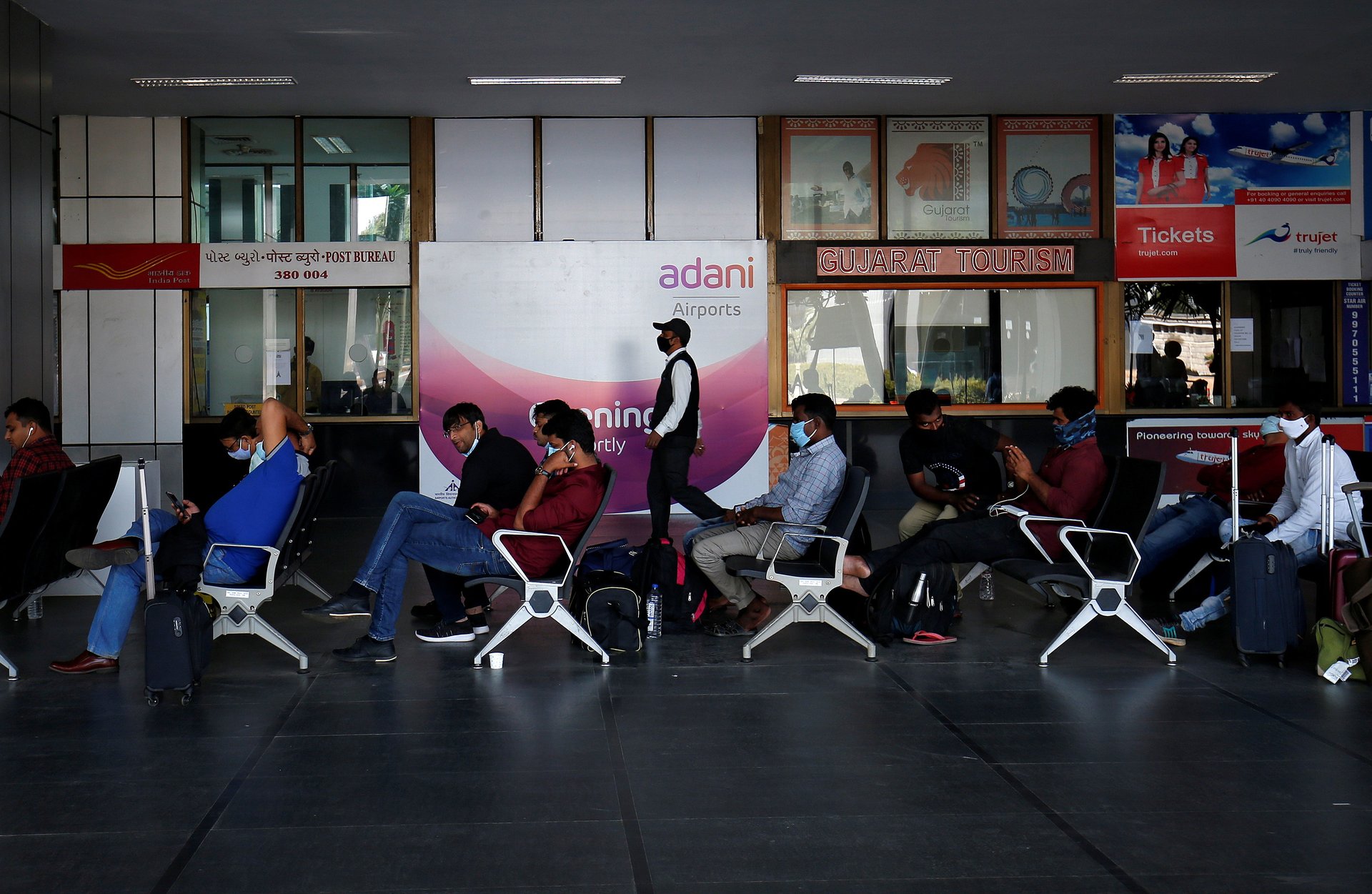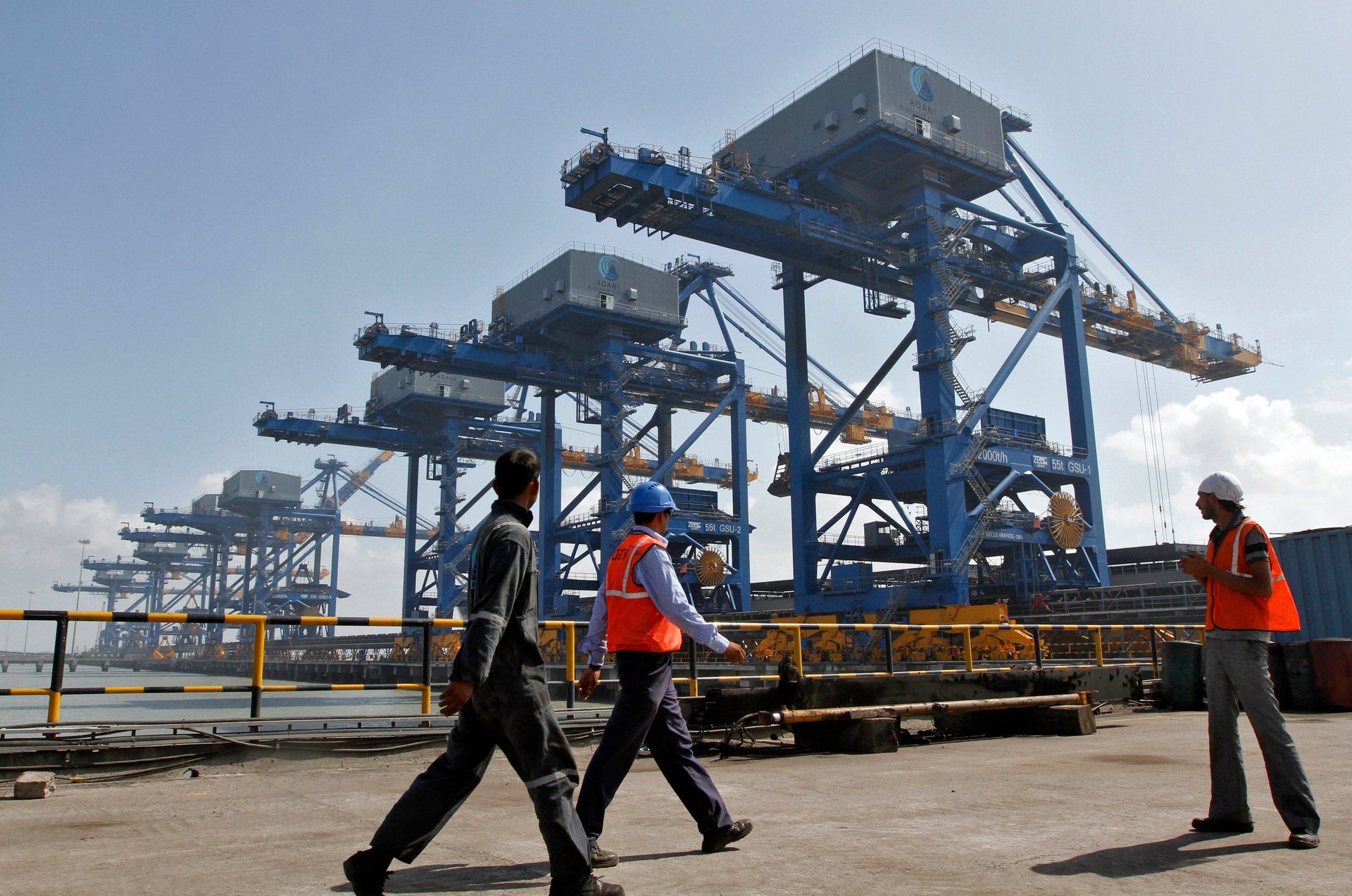For India, the Adani Group is growing too big to fail
Adani's rise over the past few years has been meteoric. But can India afford his failure?

The Indian companies belonging to Gautam Adani, the world’s third-richest man, have soared in value at breakneck pace. Some of Adani’s listed companies—such as Adani Green Energy, Adani Enterprises, and Adani Transmission—have seen their shares rise over 1,000% in the past five years.
One significant engine of this growth has been Adani’s closeness to prime minister Narendra Modi, which has raised allegations of cronyism. Adani has won a slew of government contracts in energy and infrastructure. His companies mine coal, produce power, and transmit it. They run ports and airports. They’re setting up giant solar farms. In each of these sectors, Adani’s firms are among the largest players, if not the largest.
The contracts aside, though, vast volumes of taxpayer money, both as debt and investment, have also fueled Adani’s rise. So much, in fact, that the question asks itself: Has Adani become so big that his companies cannot be allowed to fail, lest they set off shock waves in the economy at large?
India’s LIC is heavily invested in Adani’s companies
Despite the expansion of Adani’s companies, private investors have been relatively wary of putting their money into Adani stocks. The government, though, has had no such hesitation: specifically, the 66-year-old Life Insurance Corporation (LIC), which is majority-owned by the government, and manages more than $500 billion (41 lakh crore rupees) in assets. Over 50 million customers pay premiums for LIC’s insurance products. In Indian public life, few brands are more trusted than LIC.
In September 2020, LIC’s exposure to these five Adani companies stood at $889 million, or 1.24% of LIC’s equity assets under management. But a spike in stock prices and increases in shareholding have multiplied that value—to $3.9 billion in 2021, and now to $9.5 billion or nearly 8% of LIC’s total equity assets.
“The stake [held by LIC] is quite high, considering a lot of Adani Group companies are not really cash-flow rich. Some of them are not even profitable,” Amit Kumar Gupta, founder of the equity research company Fintrekk Capital, told Quartz. “Some of the companies like Adani Green Energy are futuristic and heavy capex businesses... It is a bit of a risk, having so much from one group of companies, because it could have a domino effect, if there is a negative development of any kind with respect to the debt position.”
How the Adani Group affects LIC’s fortunes
To be sure, LIC’s stakes in the companies of the Reliance and Tata groups are larger. But those are older, more time-tested conglomerates. The Adani Group’s rise has been much more recent. Perhaps for that reason, LIC stands to gain the most—but also lose a lot—from swings in Adani stocks.
Shares of Adani Enterprises, the group’s flagship entity, have risen over 2,500% in five years. In the last five months, it has acquired controlling stakes in firms across several sectors, including IT, airports, and the media. But if these debt-driven ventures do not pan out, LIC’s stakes would shrink in value, potentially making it harder to fulfill policyholders’ insurance claims.

Already, LIC has taken a huge hit after listing a 3.5% stake in itself in May this year. Adverse market conditions and high inflation have wiped out $17 billion of its market value, making LIC one of the biggest wealth losers in Asia.
India’s state banks are widely exposed to the Adani Group
The Adani Groupʼs growing appetite for expansion also raises risks for Indian banks that are already grappling with bad loans.
Although the share of loans from public banks to the Adani Group has dropped over the years, it doesn’t dispel the cloud of worries over the banks’ balance sheets. India’s overall “bad loan” ratio, which measures the extent of default on loan repayment, is one of the highest among comparable countries, at 5.9% as of March 2022. Part of the bad loan problem, critics argue, stems from easy lending to cronies, who run businesses that are often less than creditworthy.

The Adani Group’s collapse will hurt the man on the street
That kind of collapse isn’t out of the question. Rating agencies and financial experts have already flagged risk factors and how the group can spiral into a debt trap. CreditSights, a subsidiary of Fitch Ratings, highlighted in August that Adani Group is “deeply overleveraged” and may lead to the “default of one or more group companies.” The group also suffers from “high key-man risk”: the absence of robust managers below Adani himself.
“The risk is so high that Indian banks as well as some international capital bond market investors are considering limits on credit to one group, which can become a challenge for the conglomerate,” Abhishek Dangra, a senior director at S&P Global, said in an August 2022 report.
In a 15-page note responding to the CreditSights report, the Adani Group argued that its net debt-to-EBITDA ratio—a metric that measures a company’s total obligations, including debt and other liabilities—has declined to 3.2 from 7.6 over the last nine years. A net debt-to-EBITDA ratio of less than 3 is considered healthy. The lower the ratio, the higher the probability of the firm successfully paying off its debt.
“The general anxiety is around the rate at which Adani’s companies are growing and along with the acquisitions across multiple sectors, the question that comes to everybody’s mind is whether the group will be able to digest the same,” said Amit Tandon, the founder of Institutional Investor Advisory Services, a Mumbai-based firm.
Tandon believes the picture around the Adani Group’s growth will become clearer “three-four years from now.” But Chandwani worried: “If the Adani Group’s bubble bursts, the Indian stock market may experience a ripple effect.”
A massive default by one or several of Adani’s companies will rock not just the equities markets but India’s economy overall, given how deeply and widely the firms are embedded in the country’s infrastructure. The taxpayer will be hit, additionally, by her indirect exposure to the group, through LIC and the state-owned banks. A bailout would limit the damage. That too would be funded by the public exchequer, but it would be unavoidable if the government decides that the Adani Group has indeed grown too big to be allowed to fail.
